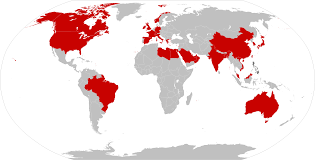888 media workers have been killed in the past decade
This article will show you the latest news article new crown pandemic puts press freedom in a “superstorm,” so read the full article carefully. Latin America and the Caribbean and Asia and the Pacific each have 22 media workers killed this year, which is the region with the highest number of deaths in this industry. Followed by the Arab countries, 9 media workers were killed, and 6 in Africa.
Overall, 2020 is one of the few years in which media workers have been killed in the past decade. In the past decade, 888 journalists and media workers have paid the “ultimate price” for disseminating information to the public. In 2019, 57 journalists were killed, and in 2018 there were 99.
Table of Contents
Director-General Azoulay:
UNESCO Director-General Azoulay said: “In 2020, we have witnessed the relevance of journalism to our democracy and human rights protection in an unprecedented way. However, this pandemic is also global press freedom. Superstorm’. At the dawn of the new year, I call on the world to defend information as a public interest. To protect journalism is to protect facts.”
Impunity for crimes against journalists
UNESCO published a report on the “International Day to End Impunity for Journalists” on November 2 this year, recording and analyzing the pattern of journalists being killed. In the past ten years, on average, one reporter was killed every four days. Despite improvements in 2020, impunity for crimes against journalists is still widespread. The impunity rate is as high as 87%, compared with 88% in 2019.
Read More: Former Prime Minister Abe apologizes
While publishing this report, UNESCO launched a global advocacy campaign entitled “Protect Journalists, Protect the Truth”.
UNESCO pointed out that although it remains to be seen whether the recent improvements can be sustained, the situation of media workers everywhere is still worrying. There are still too many killings and non-fatal attacks and harassment continue to rise.
The year 2020 highlights the dangers journalists face when covering demonstrations such as “Black lives are precious” and other protests around the world. According to UNESCO’s records, between January 1, 2015, and June 30, 2020, journalists were attacked or arrested in 125 protests in 65 countries, of which 21 incidents occurred in, In the first half of 2020, the number of such incidents has been rising in the second half of the year.
Online and offline female reporters become targets
In addition, the safety of female journalists remains a major concern. Female journalists are particularly vulnerable to online harassment and gender-based violence against their profession and gender.
International Center for Journalists:
In October 2020, UNESCO and the International Center for Journalists (ICFJ) launched a global survey on online violence suffered by female journalists and effective measures to address this issue. 73% of female reporters replied that they had experienced online violence during their work, and 20% of them said that after online harassment they also suffered offline abuse or attacks.
The COVID-19 pandemic and violence endanger the survival of the media: the risk of “extinction”
UNESCO pointed out that the new crown pandemic has exacerbated the challenges facing journalists’ safety, and the resulting crisis has also threatened the operation and survival of professional media, especially due to the huge loss of advertising revenue and the deteriorating environment for media workers. Facing new challenges in the right to seek, receive, and transmit information.
In addition, in many countries, emergency legislation and measures taken to reduce the spread of the virus have become an excuse to restrict freedom of speech and press freedom. Some journalists have also been prosecuted for exposing the government’s mistakes in solving this health crisis.
All these circumstances constitute what many people call a “super storm” and cause people to worry that the journalism profession is at risk of “extinction.”
Way out:
In response to these challenges, UNESCO has strengthened its awareness-raising programs, worked with the judiciary to combat impunity, and strengthened the “United Nations Action Plan on the Safety and Impunity of Journalists” to provide timely information on these urgent issues. Issue information and increase opportunities for journalists and other media workers to build capacity.
World Press Freedom Conference:
At the World Press Freedom Conference organized by UNESCO and the Dutch government from December 9th to 10th, more than 50 ministers and representatives of the United Nations, media and civil society gathered together, and some key actors responded to the challenge The new commitments include the Netherlands providing 7 million euros to UNESCO and the Office of the United Nations High Commissioner for Human Rights to strengthen press freedom and the safety of journalists in the coming years.









